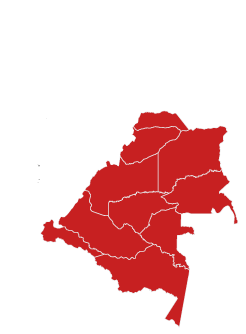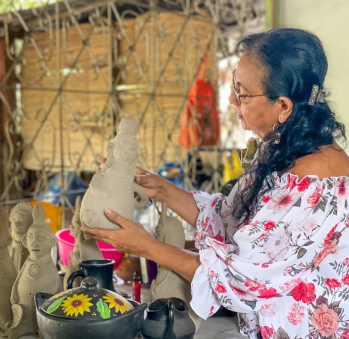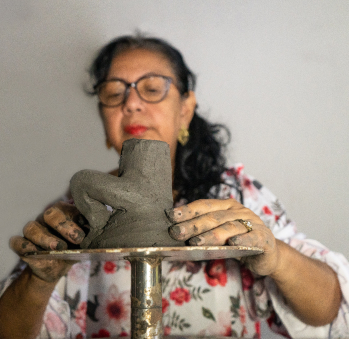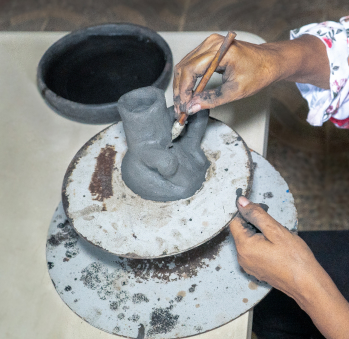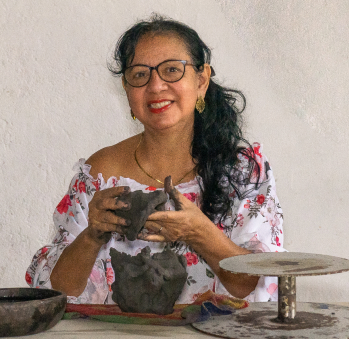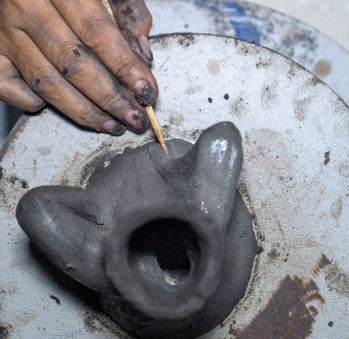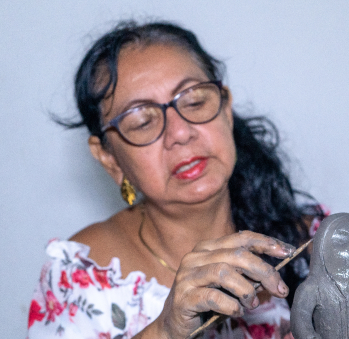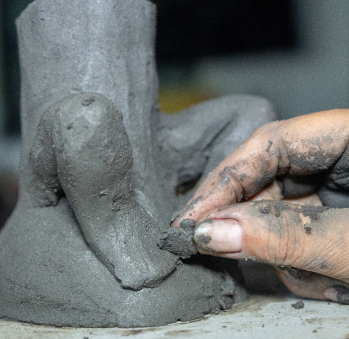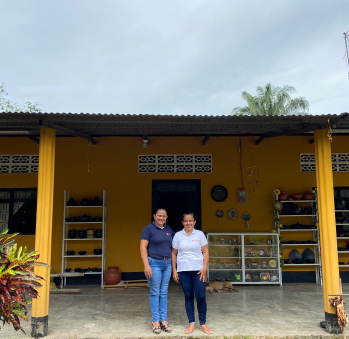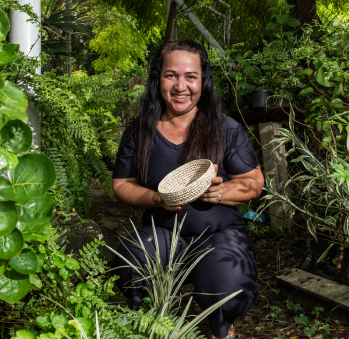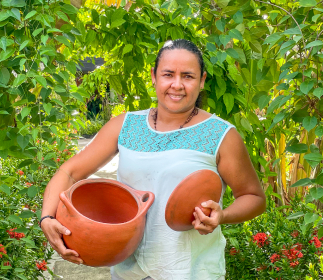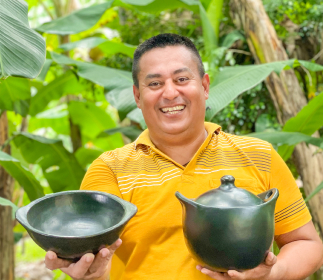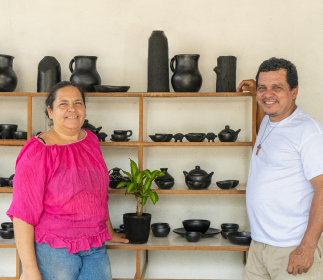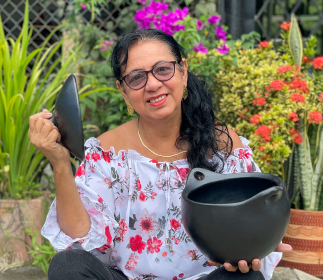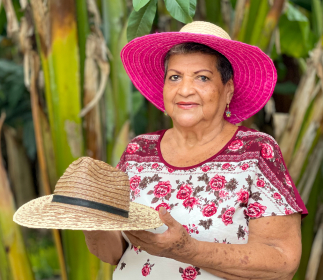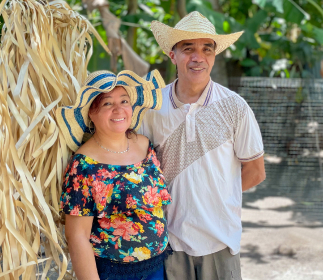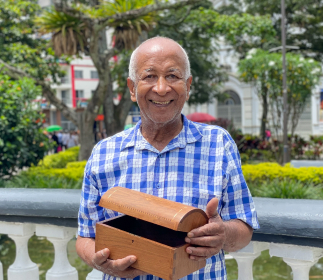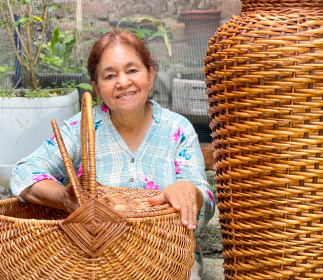Luz Mariel Rodríguez
Workshop: Manos de Oro
Craft: Pottery and Ceramics
Trail: Ibagué-Chipuelo Route
Location: La Chamba, Tolima
SCHEDULE YOUR VISIT
Vereda la Chamba, Tolima
3185905887
tallermanosdero@gmail.com
@rodriguezhomez
@luzmaro0525
She is the teacher of many generations of potters. She calls herself a “model 51,” and is also granddaughter, daughter, nephew, and mother of craftswomen. “I am La Chamba’s daughter, and I believe they made me with a small clay ball,” she says wittily and eloquently. She also claims that, when she dies, she would like her remains to be stored in a clay pot. She reminds us that she has made innumerable funerary urns, since she considers it essential to not forget the Pijao indigenous roots that lay the foundation for her community.
“I grew up in an artisan’s home: a ceramist’s home. My grandmother is a craftswoman, as are my mother and aunt, so you grow up and learn from the naguas, as we call them here, from your mother’s skirt. Also, since I was the child of the house, I made small plates to play with my siblings: the dish, the pot, the stove. And, since we had a limited amount of resources and did not have any toys, our playthings were like that: made of clay.” She, nonetheless, does not say the latter with melancholy and, on the contrary, she celebrates her childhood remembering that the tales that formed her were the legends of the “Mohán” and the “Patasola.” Such were the stories that her elders told her in a theatrical way under candlelight, because electricity arrived to the town when she was three years old.
She is full of childhood memories. Like when, long before she learned to read and write, she used to grind dry clay with a stone and sifted it with a cookie jar that had holes made with nails and worked as a sieve. Or when she helped at home to shine the clay, or when she went with her family —as if it were an adventure, stealthily and in the dark— to gather clay in a mine that was close to their home. And, as she became a young lady, she clearly knows when her mother warned her of the “Mohán.” She told her not to dive in the Magdalena River because it would take her away. “They said that it took the pretty ladies, but, since I was ugly, I did dive in the river,” she says laughing. Precisely those myths and tales of her land gave her, not just her narrative ability, but also the sign that sets her apart when shaping La Chamba’s clay, since she is one of the few artisans who has sculpture work in the town.
She has dedicated her life to honor the transmission of knowledge. Moreover, even if her mother did not teach her everything she know —since she did not know how to do it very well herself—, she did receive instruction from two masters, Gilma Barrero and Ana María Cabezas, who turned into an inspiration for her. She admires them and acknowledges that she owes what she has become to them: to the care with which they told the story of clay, and to the way they left their mark on their apprentices, being Luz Mariel one of their biggest heirs. Clay is, without a doubt, her fascination: she walks through her mines of liquid and sandy clay as if it were a daily ritual, since its mixing guarantees a quality product.
She combines the crafting of mohanes, pre-Columbian pieces, witches, birds, and candelabra, with the traditional black-clay plates and trays. Moreover, she collaborates with plastic artists, who she impresses with her technical mastery over the processes of clay. She enthusiastically lets herself get infected from the worlds and knowledges of others. Always willing to learn, she claims that she won a contest thanks to her skill and to her famous Mohán, and she went to the Great Wall of China in 2010. She tells this with the same joy of her happy times as a child.
Currently, her biggest satisfaction is to be able connect all of the knowledge she had accumulated over the years with the questions from today’s children, and with the innovation presented by trends. She knows herself to be pure tradition, but with a sense of smell and taste for continuing to discover the limits of La Chamba’s clay.
Craft
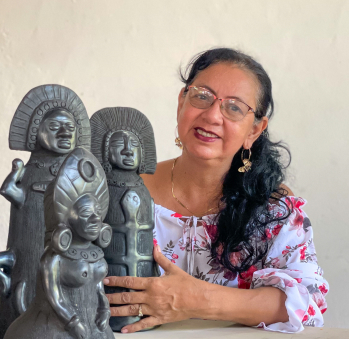

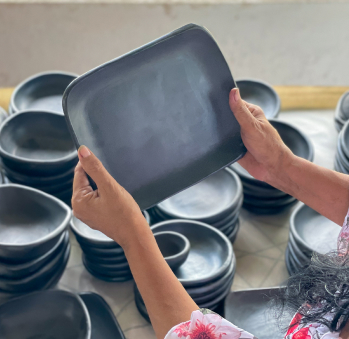



Artisans along the way
Artisans along the way
No puede copiar contenido de esta página

